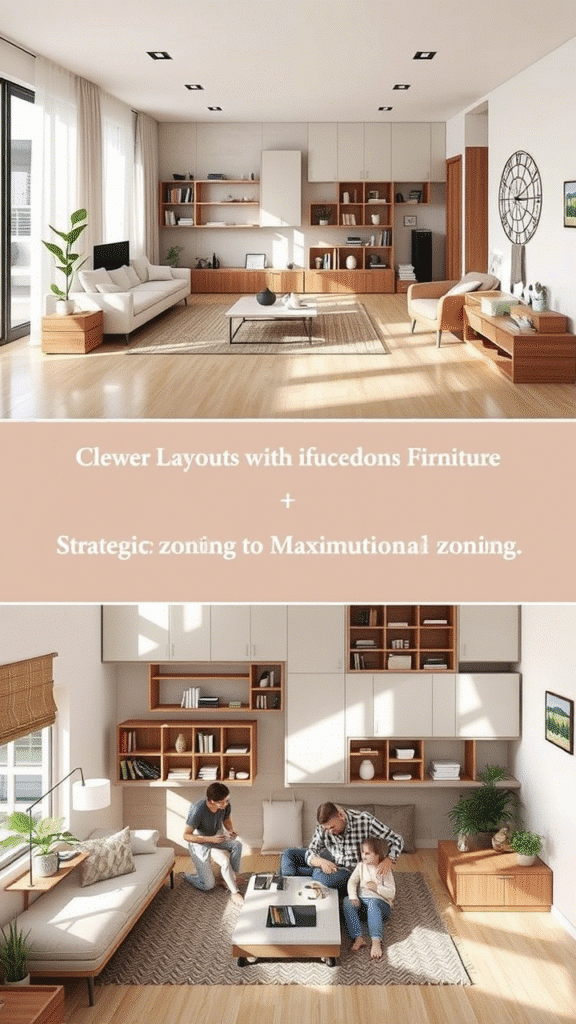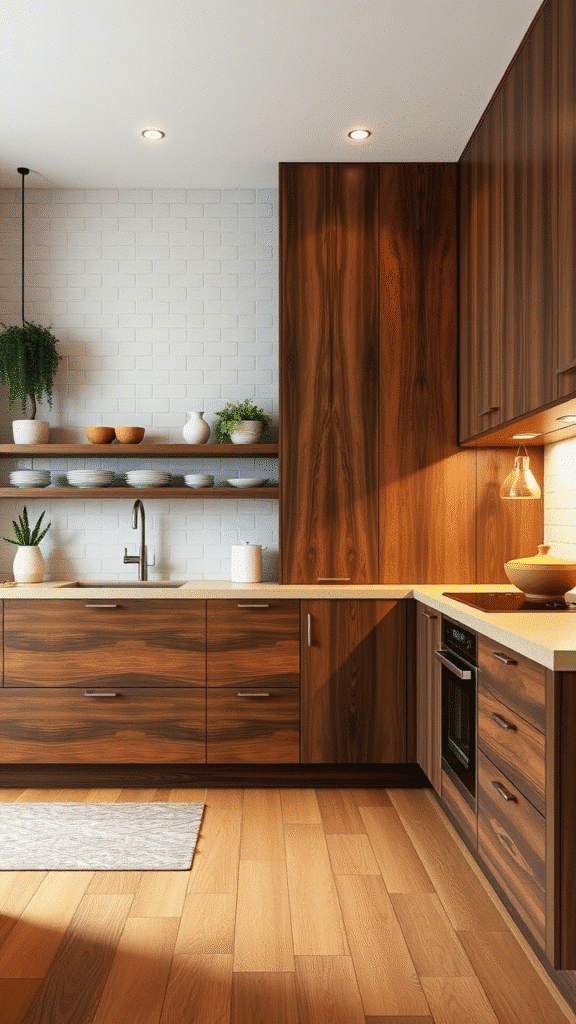Proper lighting is essential in highlighting the natural beauty of wood elements in your kitchen. A well-lit space not only enhances the aesthetic appeal but also improves functionality.
Under-Cabinet Lighting
Under-cabinet lighting serves both practical and decorative purposes. It illuminates work surfaces, making tasks like chopping and reading recipes easier, while also showcasing the wood grain and textures of your cabinetry.
- LED Strip Lights: Slim and energy-efficient, LED strips provide even illumination and can be installed discreetly under cabinets.
- Puck Lights: Small, round fixtures that offer focused light, ideal for highlighting specific areas.
Pendant Lighting
Pendant lights are a stylish addition above kitchen islands or dining areas, providing task lighting and serving as focal points.
- Mini Pendants: A row of 3–5 small pendants in complementary styles and finishes can add interest without overwhelming the space.
- Vintage Filament Bulbs: Exposed Edison-style bulbs paired with dark metal shades create a striking contrast against wood cabinetry .
Layered Lighting
Incorporating a mix of ambient, task, and accent lighting ensures a well-lit and versatile kitchen environment.
- Ambient Lighting: Overhead lights that provide general illumination.
- Task Lighting: Focused lighting for specific areas like countertops and sinks.
- Accent Lighting: Decorative lights that highlight architectural features or artwork.
Smart Lighting Solutions
Integrating smart lighting systems allows for customizable lighting schemes.
- Dimmers: Adjust brightness levels to suit different activities and moods.
- Color Temperature Control: Select warm or cool lighting to complement the wood tones in your kitchen.
- Motion Sensors: Automatically turn lights on or off based on movement, enhancing convenience and energy efficiency .
Maintenance Tips: Preserving the Beauty of Wood

Regular maintenance is key to ensuring the longevity and beauty of your wood kitchen elements.
Cleaning Wood Surfaces
- Dust Regularly: Use a soft cloth to remove dust and prevent buildup.
- Gentle Cleaning Solutions: Mix mild soap with water for cleaning; avoid harsh chemicals that can damage the finish.
- Dry Immediately: After cleaning, dry surfaces promptly to prevent water damage.
Preventing Damage
- Use Cutting Boards: Protect countertops from scratches by using cutting boards.
- Avoid Direct Heat: Place hot pots and pans on trivets to prevent heat damage.
- Seal Wooden Surfaces: Apply a protective sealant to countertops and cabinets to guard against stains and moisture.
Repairing Minor Damages
- Wood Fillers: Use wood fillers to fill in small scratches or dents.
- Touch-Up Pens: For minor nicks, touch-up pens can blend imperfections with the surrounding wood.
- Refinishing: For extensive damage, consider refinishing the wood to restore its original appearance.
Integrating Technology: Smart Features in Wood Kitchens
Modern technology can enhance the functionality and efficiency of your wood kitchen.
Smart Appliances
- Smart Refrigerators: Track inventory and suggest recipes based on available ingredients.
- Smart Ovens: Preheat remotely and monitor cooking progress via smartphone apps.
- Dishwashers: Energy-efficient models with customizable settings for optimal cleaning.
Voice-Controlled Assistants
- Smart Speakers: Use voice commands to control lighting, play music, or set timers while cooking.
- Integrated Systems: Sync various smart devices for seamless control through a central hub.
Sustainable Technologies
- Energy-Efficient Lighting: LED bulbs consume less energy and have a longer lifespan.
- Water-Saving Fixtures: Install low-flow faucets and dishwashers to conserve water.
- Recycling Stations: Designate areas for recycling within your kitchen to promote sustainability.
Layout Ideas: Maximizing Space and Functionality

Efficient layout planning is crucial in creating a functional and aesthetically pleasing wood kitchen.
Open Shelving
- Accessibility: Keep frequently used items within easy reach.
- Display: Showcase decorative pieces or unique kitchenware.
- Airy Feel: Open shelves can make a small kitchen feel more spacious.
Kitchen Islands
- Additional Workspace: Provides extra counter space for meal preparation.
- Storage: Incorporate drawers or cabinets for added storage solutions.
- Seating: Add stools for a casual dining area or conversation spot.
Efficient Work Zones
- Work Triangle: Arrange the sink, stove, and refrigerator in a triangular layout for optimal workflow.
- Task-Specific Areas: Designate zones for cooking, cleaning, and food preparation to streamline tasks.
Style Inspirations: Diverse Wood Kitchen Designs

Explore various design styles to find the perfect wood kitchen aesthetic for your home.
Modern Minimalist
- Clean Lines: Opt for flat-panel cabinets with minimal hardware.
- Neutral Palette: Use light wood tones and white or gray accents.
- Open Spaces: Maintain uncluttered surfaces and open shelving.
Rustic Farmhouse
- Reclaimed Wood: Incorporate salvaged wood for a weathered look.
- Vintage Accents: Use antique hardware and fixtures.
- Warm Tones: Choose medium to dark wood finishes for a cozy atmosphere.
Industrial Chic
- Exposed Elements: Combine wood with metal and concrete for an urban feel.
- Bold Fixtures: Use industrial-style lighting and hardware.
- Neutral Colors: Stick to a monochromatic color scheme with wood accents.
Conclusion
Designing a wood kitchen involves thoughtful consideration of materials, layout, lighting, and maintenance to create a space that is both functional and aesthetically pleasing. By integrating sustainable practices, modern technologies, and diverse design styles, you can craft a kitchen that reflects your personal taste and meets your practical needs.
Feel free to explore various design inspirations and consult with professionals to bring your vision to life. Remember, the key to a successful wood kitchen design lies in balancing beauty with functionality, ensuring a space that you’ll enjoy for years to come.
